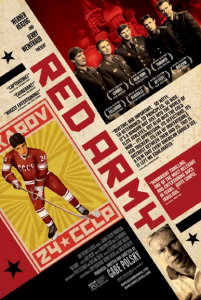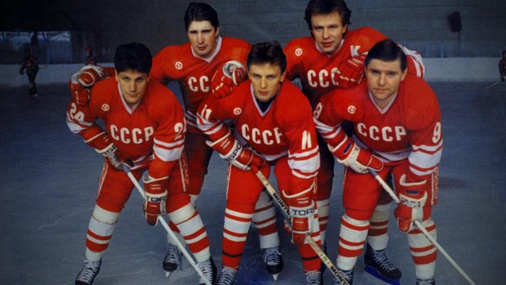
 Slava Fetisov was the captain of the famed Russian national hockey club known in the West as the Red Army. During the 1980s, he is widely regarded as one of the best ice hockey players to ever play the game. Like many of his fellow hockey players, Fetisov was the product of the Soviet System. It is the same system that made helped make him great but then kept him in virtual slavey.
Slava Fetisov was the captain of the famed Russian national hockey club known in the West as the Red Army. During the 1980s, he is widely regarded as one of the best ice hockey players to ever play the game. Like many of his fellow hockey players, Fetisov was the product of the Soviet System. It is the same system that made helped make him great but then kept him in virtual slavey.
Director Gabe Polsky’s tremendous documentary “Red Army” is Fetisov’s story, but it is also a penetrating indictment of the Cold War practices of the Soviet Union and its mistreatment of some of the greatest athletes in history. Moving and eye-opening, Fetisov’s story is given handsome treatment. Polsky takes an aggressive approach often baiting his subjects and challenging them vocally during the interviews. At times, he even questions the stories told by his guarded subject and other interviewees. These are tough men born and bred in a stoic and proud country. And the game of hockey was one of their nation’s weapons against the forces of the West.
“Red Army” crackles with nostalgia. Polsky populates the narrative with archive footage from Russia and the US. We see intimate training films, home movies, old game footage, commercials, sports pundit interviews and commentary. It is all very entertaining, but the contrast between the upbeat commercials and pleasant home movies with the oppression of the Soviet System is striking. And as the story unfolds and the transition to the NHL finally occurs, it almost seems too late. But I dare not give anything away.
What is clear is that Fetisov’s story is ripe for narrative feature film treatment. His redemption is hinted at here in a closing third act that pulls most of the story threads together nicely. Breaking the chains of the Soviet System wasn’t easy and the pain was great. Thankfully, there’s a bit of humor injected into the documentary process by Polsky himself. Though this technique can be distracting, it works, especially as the film draws to a close.
I was struck by how the archived images and footage of the players, especially Fetisov, vividly displayed the angst they must have been feeling as hockey players around the world signed big contracts and lived lives of luxury. The pain is written on their grim faces. It is enough to make you want to give these guys a great big hug and ask them to loosen up. The portrait painted here is largely one-sided, but there is enough truth on display to draw your own conclusions. The Soviet System may have produced the greatest hockey dynasty in history, but the ultimate cost was too high. The lesson should not be forgotten.

